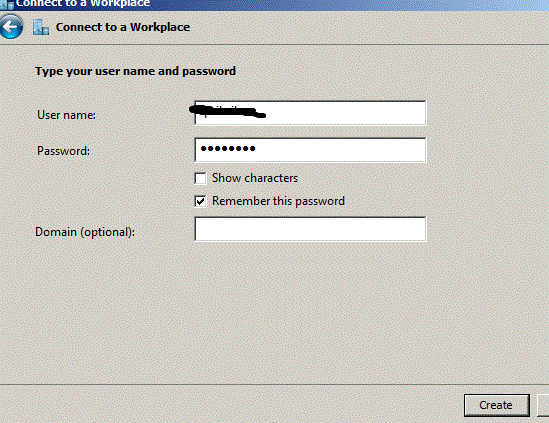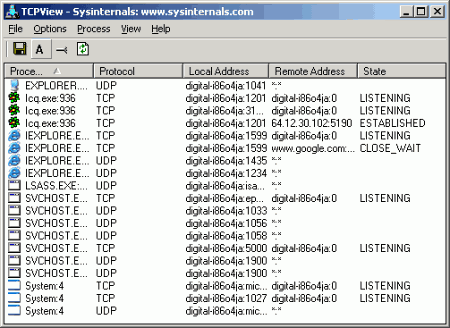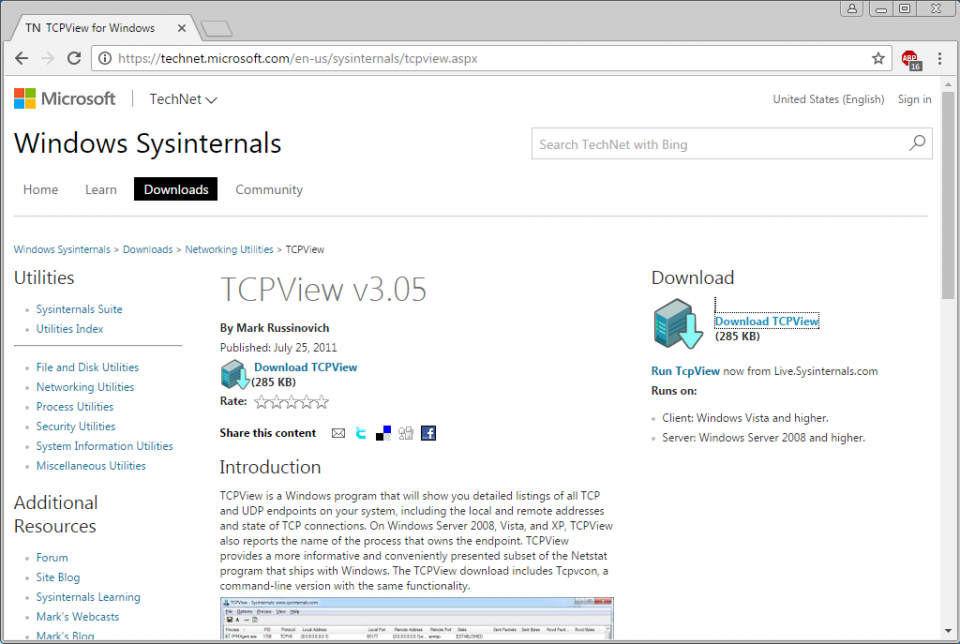
TCPView runs on Windows 8.1 and higher for client machines and Windows Server 2012 and higher for servers. Tcpvcon enables you to show all endpoints, print output as CSV, and avoid resolving addresses by using the -a, -c, and -n parameters, respectively. If you prefer using a command-line utility, TCPView offers Tcpvcon, which has usage similar to that of the built-in Windows netstat utility. Additionally, you can save TCPView's output window to a file using the Save menu item. TCPView also allows you to close established TCP/IP connections (those labeled with a state of ESTABLISHED) by selecting File|Close Connections or right-clicking on a connection and selecting Close Connections from the resulting context menu. Endpoints that change state from one update to the next are highlighted in yellow those that are deleted are shown in red, and new endpoints are shown in green. By default, TCPView updates every second, and you can change the update rate by using the Options|Refresh Rate menu item. You can toggle the display of resolved names using a toolbar button or menu item.

When you launch TCPView, it will automatically display a list of all active TCP and UDP endpoints, including the name of the process that owns each endpoint, and it resolves all IP addresses to their domain name versions. The TCPView download includes Tcpvcon, a command-line version with the same functionality.

In addition, TCPView reports the name of the process that owns the endpoint on Windows Server 2008, Vista, and XP.

It is a more informative and conveniently presented subset of the Netstat program that comes with Windows. TCPView is a powerful Windows program that provides detailed information about all TCP and UDP endpoints on your system, including local and remote addresses and the state of TCP connections. Zip archive data, at least v2.0 to extract


 0 kommentar(er)
0 kommentar(er)
